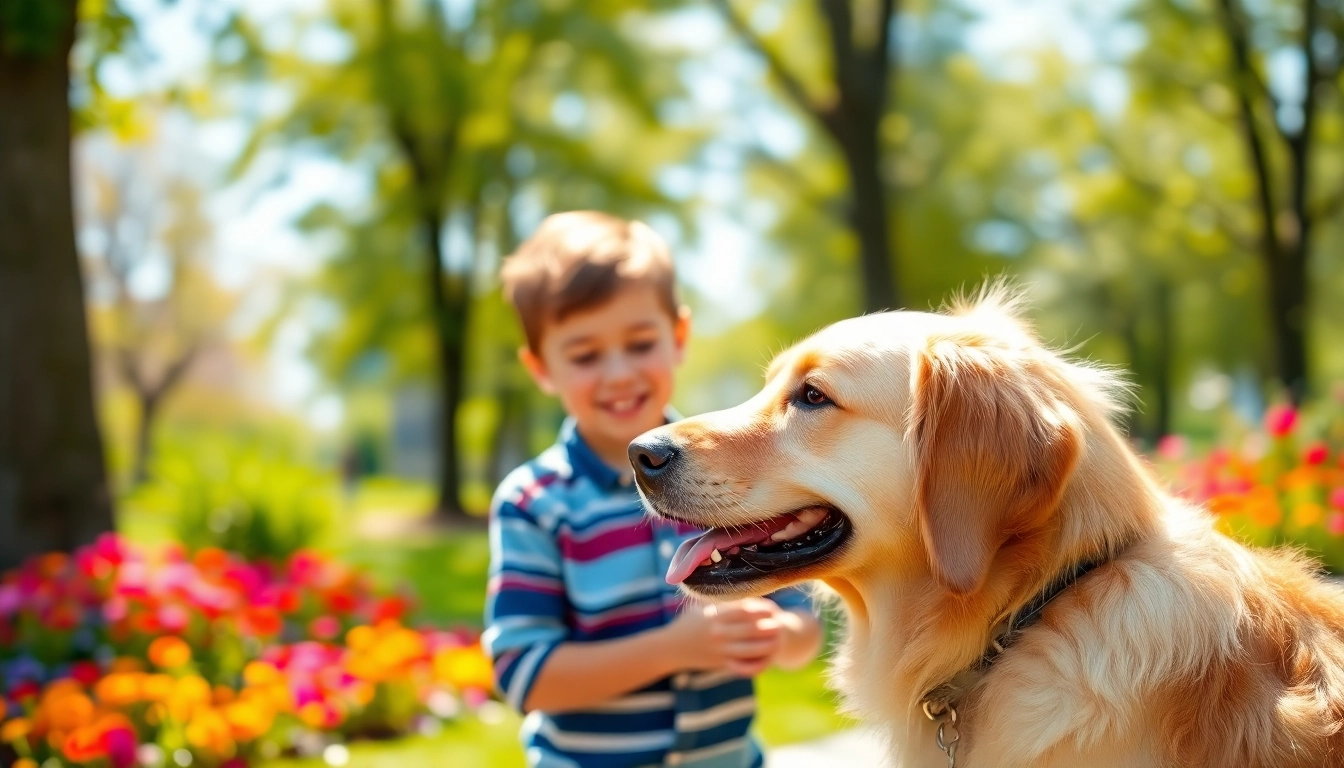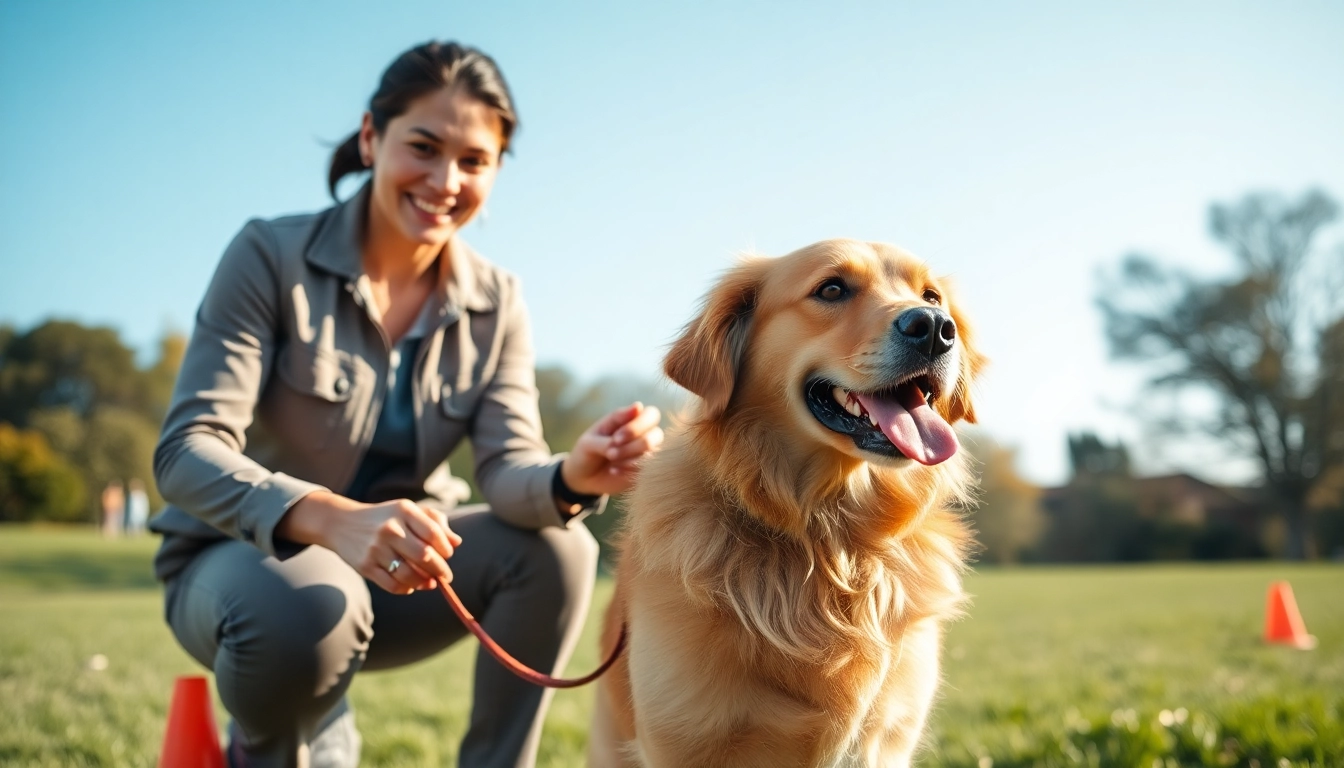What Are Autism Dogs?
Defining Autism Dogs and Their Role
Autism dogs, also known as autism assistance dogs, are specially trained service dogs that provide support to individuals with autism. These animals play a crucial role in helping their handlers navigate daily challenges associated with autism, such as communication difficulties, social interaction issues, and sensory sensitivities. The bond between an individual and their autism dog can foster a sense of companionship, safety, and independence, allowing the individual to manage their disability more effectively. For families looking to explore the possibility of bringing an autism dog into their home, resources for autism dogs are available, helping connect individuals with trained assistance animals.
Types of Autism Dogs Available
There are several types of autism dogs, each providing different forms of assistance based on the unique needs of the individual. These can include:
- Therapeutic Dogs: Designed primarily to provide emotional support, these dogs are often employed to help reduce anxiety and enhance emotional well-being.
- Mobility Assistance Dogs: These dogs aid individuals who may struggle with mobility, helping them navigate their environments safely.
- Sensory Response Dogs: Trained to recognize signs of sensory overload or distress, these dogs help their handlers manage sensory sensitivities by providing calming support.
- Social Interaction Dogs: These assistance dogs encourage social engagement, often helping their handlers to interact more comfortably with others.
How Autism Dogs Assist Individuals
Autism dogs have been shown to assist individuals in numerous significant ways. One of the key roles they play is providing constant companionship, which can alleviate feelings of isolation that many individuals with autism experience. Additionally, these dogs can:
- Help with safety: Autism dogs can be trained to prevent their handler from wandering off, providing peace of mind for caregivers.
- Encourage social interaction: By serving as a bridge to communication, dogs can facilitate connections with peers and adults alike.
- Provide sensory support: The presence of a calming animal can help individuals navigate distressing environments, contributing to improved coping strategies.
- Enhance daily living: Many autism dogs are trained to assist with tasks that increase independence, such as retrieving items or providing reminders for daily routines.
Benefits of Autism Dogs for Families
Emotional Support and Companionship
The emotional support that autism dogs provide is invaluable. These animals offer unconditional love and companionship, which can be particularly beneficial for individuals who often feel socially isolated. The presence of a dog can create a friendly atmosphere where the individual feels understood and accepted, leading to enhanced emotional well-being. Furthermore, this bond can improve the family dynamic, providing a shared connection and purpose that fosters stronger relationships among family members.
Enhancing Social Interactions
Autism dogs are remarkable social facilitators. Their presence encourages family members and friends to interact more positively with the autistic individual, fostering connections that might otherwise be difficult to achieve. Furthermore, autism dogs can help break the ice in social situations, making it easier for the individual to engage in conversations and form friendships. This can lead to improved social skills and greater confidence over time.
Improving Daily Life and Independence
Increasing independence is a significant benefit of having an autism dog. These dogs can assist with a variety of tasks, such as reminding the individual to take medications, prompting them during daily routines, and even helping navigate unfamiliar environments. The skills developed through training and bonding with an autism dog not only enhance the individual’s confidence but also empower them to handle day-to-day challenges more effectively.
Training Your Autism Dog
Key Skills for Autism Dogs
Training an autism dog requires specific skills that cater to the needs of individuals with autism. Some essential skills can include:
- Distraction Techniques: Teaching the dog to perform specific behaviors that redirect the individual’s attention during overwhelming situations.
- Anchor Tasks: Training dogs to engage in behaviors that calm the individual, such as lying next to them or providing physical reassurance.
- Alerting Behaviors: Teaching dogs to recognize and react to signs of distress or anxiety, often through specific behaviors such as nudging or barking.
- Navigation Support: Ensuring the dog can guide the individual through busy environments, helping them safely cross streets and navigate various settings.
Training Approaches and Techniques
Training an autism dog requires patience, consistency, and a deep understanding of both canine behavior and the specific challenges faced by individuals with autism. Employing positive reinforcement techniques is essential, rewarding desired behaviors with treats or praise to foster a strong bond and encourage learning. Incremental training steps can ensure that the dog learns effectively without becoming overwhelmed. Professional trainers experienced in working with autism dogs can provide valuable guidance, often tailoring their methods to meet the unique needs of the individual and their family.
Tips for Effective Training Sessions
Maximizing the effectiveness of training sessions involves several key strategies:
- Short, Consistent Sessions: Keep training sessions brief but consistent, ideally around 5-10 minutes, to maintain the dog’s focus and prevent fatigue.
- Incorporate Play: Integrating play into training helps to make learning fun for the dog, creating a more engaging experience.
- Use High-Value Rewards: Utilize treats that the dog finds particularly appealing to encourage their motivation and enthusiasm during training.
- Be Patient and Positive: Remaining calm and positive throughout the training process fosters a sense of trust and security in the dog, promoting a desire to learn.
Selecting the Right Autism Dog
Factors to Consider When Choosing
Selecting the right autism dog is a critical decision that can significantly impact the success of the partnership. Key factors to consider include:
- Temperament: Look for a dog with a calm, friendly demeanor, as characteristics such as patience and a gentle disposition are essential in an assistance dog.
- Size: Ensure that the size of the dog suits the individual’s lifestyle and living environment. Smaller breeds may be more manageable for certain families, while larger breeds may provide greater support.
- Energy Level: Consider the energy level of the dog and how it matches the lifestyle of the individual. Active individuals may benefit from high-energy dogs, while those who prefer a calm environment may thrive with a more laid-back breed.
- Compatibility: It is crucial that the dog and the individual share a natural bond. Test interactions before full adoption to evaluate how they engage with one another.
Evaluating the Match between Dog and Child
Once potential candidates are identified, observing interactions is key to evaluating the match between the dog and child. Signs of a positive match can include:
- Joyful engagement between the dog and the child, showcasing comfort and curiosity.
- The dog displaying calmness and patience when the child experiences distress or overload.
- The child responding positively to the dog’s presence, showing a desire to interact and bond.
Resources for Finding Autism Dogs
There are numerous organizations and resources dedicated to helping families find the right autism dogs. Engaging with local service dog programs, autism advocacy groups, and reputable dog trainers can yield valuable recommendations. Additionally, online platforms and forums provide community support and advice from families who have successfully matched with an autism dog, offering a wealth of shared experiences and insights.
Legal and Support Resources for Autism Dogs
Understanding Regulations and Rights
It is essential to understand the legal rights and regulations surrounding service animals. In the United States, the Americans with Disabilities Act (ADA) establishes that service dogs, including autism assistance dogs, are permitted access to most public areas. This right empowers individuals with autism to navigate their environments more freely and confidently. However, the laws surrounding emotional support animals differ from those governing service dogs. Familiarizing oneself with local regulations and requirements is crucial to maximizing the benefits that autism dogs provide.
Organizations Supporting Autism Dogs
There are various organizations committed to training and placing autism dogs with families. Seeking out these organizations can provide guidance, support, and information about applying for and obtaining an autism dog. Additionally, many of these organizations offer continued education and support for families, ensuring that both the dog and the family thrive together.
Community and Online Resources
Engaging with a wider community can enhance the experience of acquiring and working with an autism dog. Online forums, social media groups, and local meet-ups can provide valuable avenues for connection with other families who share similar journeys. These resources often yield advice, training tips, and emotional support, contributing significantly to the overall success of the partnership between families and their autism dogs.



